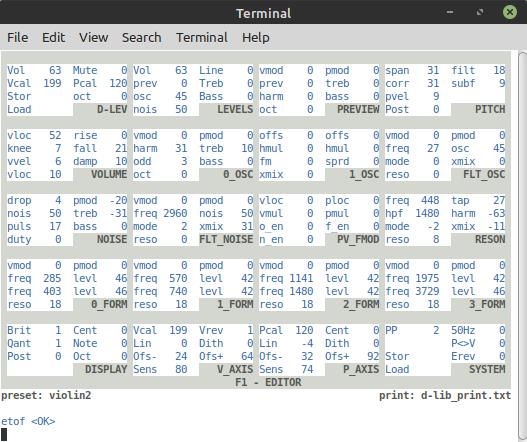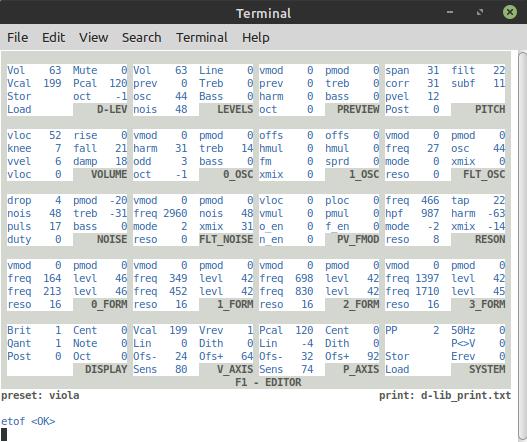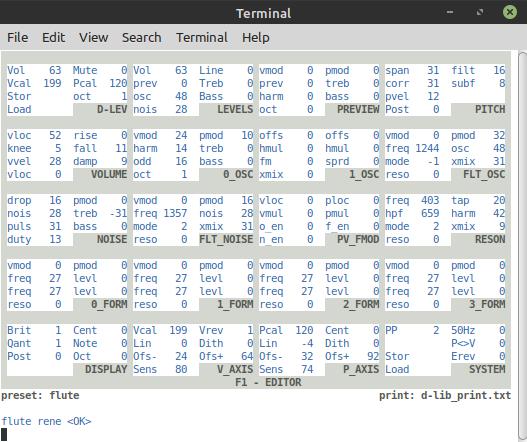"I will say again that these are, as always, my opinions. But we have sparred a bit on many issues since the beginning, and I would like to think that the D-Lev is better for it." - pitts8rh
Same here and understood - this project has very much benefited from your input! I don't think a better collaborator than you actually exists!
"We have at times talked about this being either a pro-level instrument or an inexpensive but high capability beginner's instrument. I sense that you are now aiming at the latter, even though the user interface is pretty daunting for that audience."
The target has been me, then you and me, and I often think about my Thereminist friend Philip and how he might react. But I don't really know who the target is. The axes are hard enough to calibrate (though once the physical design stops moving this can be canned to a large degree) that I'm a little afraid of the total noob (though I they buy and use EW's, and those are a bear to tune). Seasons don't fear the reaper, but they probably fear the noob - as should anyone who finds themselves placed in a manufacturing scenario! ;-) Nothing on noobs, per se.
I suppose the target audience is good Thereminists who already have an instrument or three and are very familiar with how they operate?
"If you don't agree with the need for global kill switches then it might make sense to segregate the presets into pitch corrected groups, as other instruments or effects processor do."
That would be trivial, and trivial is what I do best! ;-)
"An accomplished theremin player is not going to like flipping to a preset that has pitch correction and envelope alterations. I'm a pretty low-skill player and even my first impression with the string presets was that something was wrong. Pitch was acting weird, and the response times reminded me of the early problems with volume response. Then I looked into the presets and saw the envelope and pitch correction settings, and zeroed everything out."
If there were only one option, I guess turning off pitch correction for virtually all the presets (except those that rely on it as a "special effect") is the safest route to take. I'm feeding you my own raw presets as they become available, which won't be the general case.
"I don't play to the tuner, and it's not a good idea to assume that others will stare at it either during the course of playing."
We shall (hopefully!) see! I'm certainly not the best player, and perhaps part of that is my over-reliance on "training wheels" like the tuner, but without it I'm almost certain that I wouldn't play nearly as much as I do, and may have given up by now. It's not just to align the notes with the pitch correction (though that's a lot of it, and a practicality I didn't anticipate at all up-front) it's also staying on-pitch through a song without accompaniment (which is my default mode, unfortunately). Perhaps as - or even more - importantly: the tuner lets me literally see the key, where the song notes are in that key, and the intervals between notes, and this provides me with information about the structure of the song, and music in general, that I never would have obtained on a regular Theremin, or any other gliss-based instrument. e.g. I wasn't aware how many "interesting" notes in songs are accidentals to the key, and how their placement in the melody seems designed to emphasize them. And seeing the size of the intervals informs the size of my hand movements. It's so powerful. But I do get your point.
"I think what needs to be considered is the balance between having to tell the experienced player to turn things off or the noob to turn things on. For a reference of how others handle this, the only other instruments that I have are two effects processors that have optional pitch correction. It is, like chorus, delay, and several other functions switchable on a per-preset basis, and not globally as far as I know. But a key difference with both of these is that the presets can be named and the displays show which effects blocks are active in a given preset, neither of which the D-Lev has. And on top of that the pitch correction presets are limited and grouped."
Very eloquently put! A small contiguous group of instruments with pitch correction engaged could easily be implemented. I'd like to do this anyway because the effect can be made subtle sounding yet quite strong in effect, and it would be nice to have a few examples of such settings in there.
"But I would never have any of the corrections applied to the standard instrument presets unless they are off by default."
Excellent advice! Thank you for taking the time to explain your observations in more depth! I definitely see where you're coming from now.






